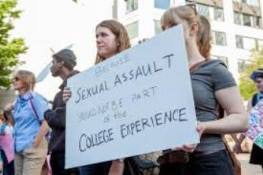
That is one of the key takeaways from a new survey released recently by EverFi, an education technology company that teaches “critical skills” to institutions of higher education and K-12 schools.
The survey — titled “Sexual Victimization and Social Norms on the College Campus” — comes at a time of intense national discussion about the best ways to combat the persistent problem of sexual assault at America’s colleges and universities.
The 1 in 30 figure — considered higher than the 6.1 per 1000 female students age 18 to 24 figure released by the U.S. Department of Justice but lower than the “1 in 5” statistic reported in The Campus Sexual Assault Study — is meant to be a gauge of the extent of the problem on campus and to enlighten administrators on the best way to fight it, an EverFi research says.
With regard to such, the survey reveals a substantial gap between “actual norms” and “perceived norms,” that is, the difference between students’ willingness to intervene if they witnessed sexual victimization versus how likely they thought their peers would be to do the same.
Eighty-one percent of students indicated they are willing to intervene but only 55 percent thought their peers would do the same the survey found.
“The problem with having a difference between these two norms is that students are less likely to intervene or report an issue if they believe their peers wouldn’t do the same,” Dan Zapp, director of research at EverFi, told Diverse.















